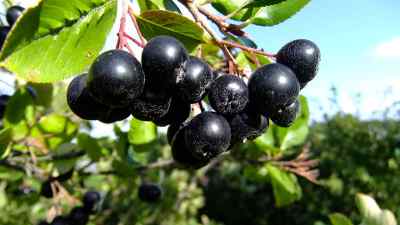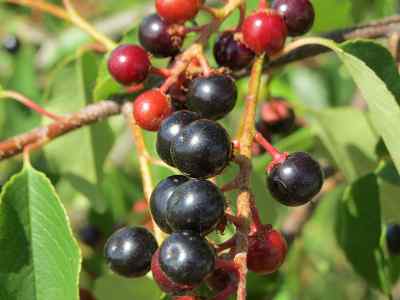Various Cherries Wild Edible Food
Cherry Trees And Shrubs - Survival Food
Cherry Trees as a group contains over 400 species all with edible fruit. Cherry Trees are collectively members of the Prunus Genus. So any plant you research that has the name Prunus as the first part of its scientific name is a species of Cherry. All Cherry trees produce edible fruit that surrounds an inedible pit.
 Although often grown for their fruit, these trees and shrubs are also grown for their ornamental flowers, Prunus trees and shrubs usually have five petals and five sepals on each flower, which are often white. Some varieties have been bred to have double flowers with many more petals.
Although often grown for their fruit, these trees and shrubs are also grown for their ornamental flowers, Prunus trees and shrubs usually have five petals and five sepals on each flower, which are often white. Some varieties have been bred to have double flowers with many more petals.
Plants in the Cherry genus range in size from shrubs on up trees. And which species you encounter will be determined by which part of the country you live in. So, let's get down to how to identify if the plant you are looking at is indeed a member of the Cherry family.
All Cherry trees and shrubs will have leaves arranged in an alternate manner. All Cherry trees will have simple, not compound leaves. Almost all are deciduous. The flowers of all Cherries are produced as racemes corymbs (looks like a menorah) or fascicles (flowers growing all crowded together).
The individual flowers will have 5 petals of white or pink. And the fruit will be a drupe, which means it will always be like a traditional Cherry, a fruit with a stone aka pit in the center. Prunus sp. always flower in the spring. Cherry plants have leaves with finely serrated edges and bark showing horizontal lenticels on newer growth. A lenticel will show up as lightly colored dots or usually like little minus signs.

Some of the common Cherry species you are likely to encounter are Black Cherry, Chokecherry, Pin Cherry, Wild Plum and many others.
Regardless of which species you find, you can rest assured that the fruit is edible, just avoid the pit. Cherries can be eaten raw, but are best when used in pies or other recipes where they are cooked. The Cherries get darker as they ripen and the darker ones will have the best flavor if you are eating them raw. Cherries ripen in May and June depending on the species and locale.
Cherries contain lots of antioxidants and have a very healthy food and a great food source when in season.
A word of caution. Cherry plants all produce hydrogen cyanide in all parts of the plant other than ripe cherries. Livestock will often eat the plant and if they consume enough, then that can result in death.

Plants in the Cherry genus range in size from shrubs on up trees. And which species you encounter will be determined by which part of the country you live in. So, let's get down to how to identify if the plant you are looking at is indeed a member of the Cherry family.
All Cherry trees and shrubs will have leaves arranged in an alternate manner. All Cherry trees will have simple, not compound leaves. Almost all are deciduous. The flowers of all Cherries are produced as racemes corymbs (looks like a menorah) or fascicles (flowers growing all crowded together).
The individual flowers will have 5 petals of white or pink. And the fruit will be a drupe, which means it will always be like a traditional Cherry, a fruit with a stone aka pit in the center. Prunus sp. always flower in the spring. Cherry plants have leaves with finely serrated edges and bark showing horizontal lenticels on newer growth. A lenticel will show up as lightly colored dots or usually like little minus signs.

Regardless of which species you find, you can rest assured that the fruit is edible, just avoid the pit. Cherries can be eaten raw, but are best when used in pies or other recipes where they are cooked. The Cherries get darker as they ripen and the darker ones will have the best flavor if you are eating them raw. Cherries ripen in May and June depending on the species and locale.
Cherries contain lots of antioxidants and have a very healthy food and a great food source when in season.
A word of caution. Cherry plants all produce hydrogen cyanide in all parts of the plant other than ripe cherries. Livestock will often eat the plant and if they consume enough, then that can result in death.
